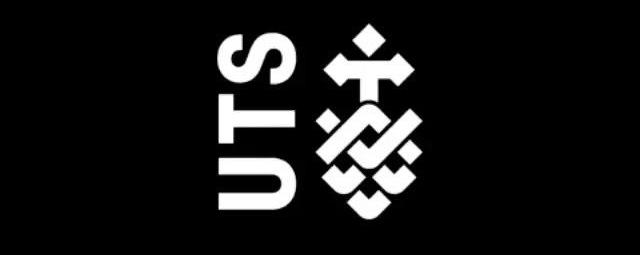THE ART OF VIOLENCE
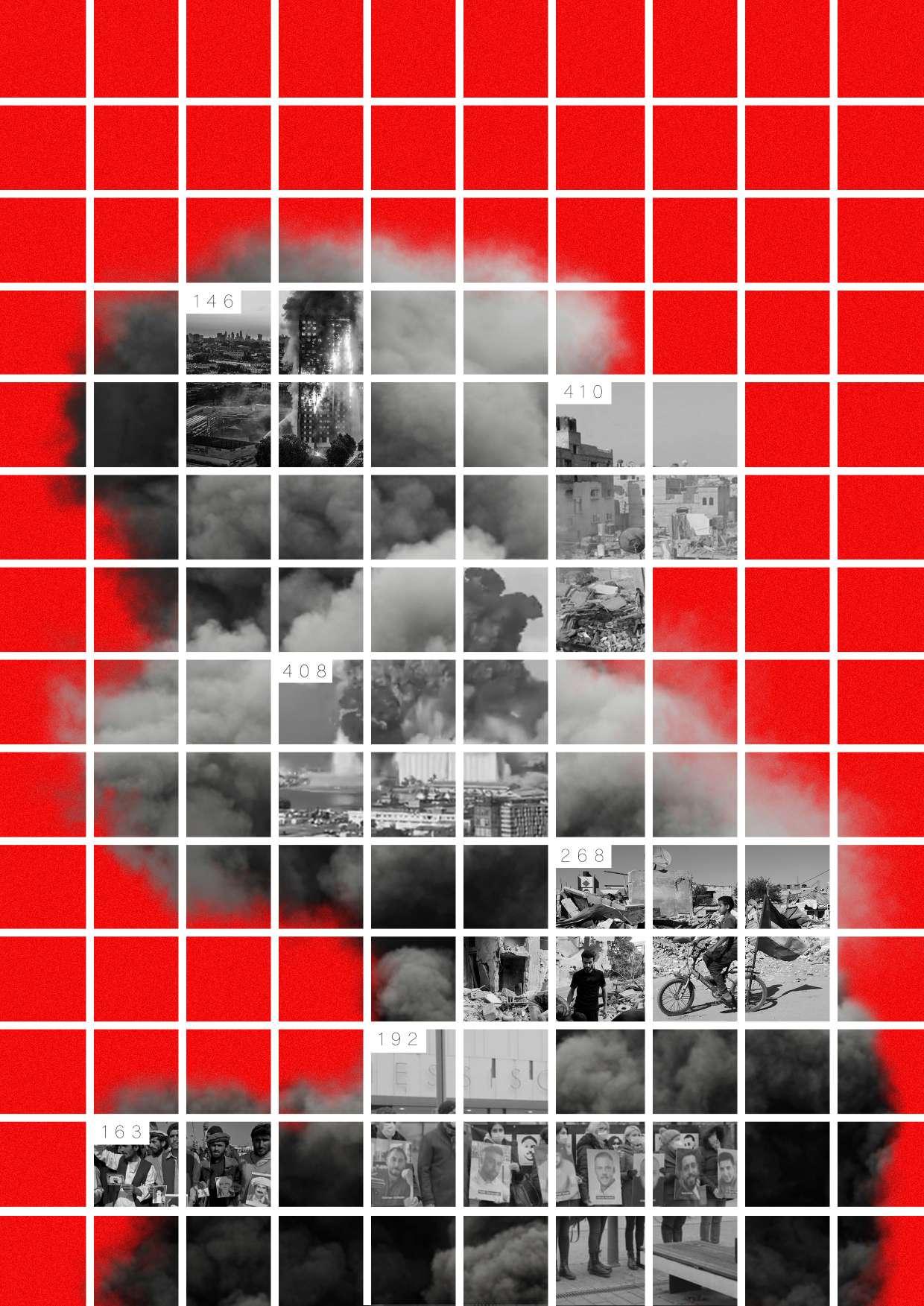




Established in 2010, Forensic Architecture (FA) is an agency based in Goldsmith, University of London.
“An architectural detective agency” after the truth.

This urban narrative unpacks the ways in which Palestinian families in Sheikh Jarrah are being forcibly displaced from their own homes, suburbs and country. The story begins at an individual family home (Al Kurd family) in which was invaded by Israeli settlers. It then moves the street, neighbourhood, city and land, depicting the colonial practices, and the Palestinians’ struggle to retain their culture and land. Israeli’s use urban planning through zoning, concrete apartheid walls urban infrastructure to isloate and evict Palestinians from their homes.
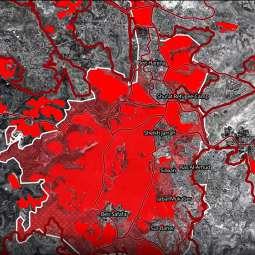
Along the Mississipi river in Louisiana, there is a petrochemical corridor that was formerly known as the plantation country. In collaboration with RISE St. James, FA developed methods to locate cemeteries that were lost to the United States’ most polluting petrochemical facilities. In the years after emancipation, the region underwent a process of spatial, economic, and social Reconstruction. Some cemeteries remained in continuous use, while others were lost to time. As a result, they began to argue that the whole ecology of the region was to be reconsidered for its cultural value - being the lineage of Black descendents for over 300 years who were enslaved.

Following the killings of George Floyd and other black Americans, protests against racialised police violence swept the United States. These protests have also been met with brutality by police. In collaboration with Bellingcat, FA built a comprehensive archive of the recurring systematic violence, to support accountability efforts and abolition. Through geolocating images and videos based on visual clues within the frame, and contextual clues from open sources, and determined the incident date by referencing corroborating information from open sources.
 SHEIKH JARRAH: ETHNIC CLEANSING IN JERUSALEM RACIAL DISPLACEMENT
SHEIKH JARRAH: ETHNIC CLEANSING IN JERUSALEM RACIAL DISPLACEMENT

Vaca Muerta is one of the world’s largest fossil fuel resources. The introduction of the oil and gas industry to Vaca Muerta has changed its landscape, causing widespread environmental damage. As a result, has also impacted the traditional ways of life of the indigenous Mapuche people of the region. In collaboration with The Guardian, as part of “The Polluters’ series, Forensic Architecture developed the Normalised Difference Vegetation Index in which brings to light the distressed vegetation whose ownership is disputed between.
When architecture becomes vital in times of need. A racist terror attack in Hanau, Germany left nine people dead, and six people injured. Forensic Architecture, together with Forensis, was commissioned to investigate the issues relating to the attack, and collate evidence required for legal and political forums. The analysis demanded important questions be answered, and to unpack those liable for the emergency exit door to be locked the night of the incident - 19 February 2020.
An unprotected database belonging to Israeli cyber-weapons manufacturer NSO Group’s COVID-19 contact tracing software called ‘Fleming’ was left exposed. Even though NSO denied the security breach, Forensic Architecture analysed the exposed database. Mapping the geographic distribution of these data points, their investigation suggested that the data was based on ‘real’ personal data belonging to unsuspecting civilians. Yet the NSO Group still denies their security breach.

 TAL CRISIS
HANAU: ARENA BAR RACIST TERROR ATTACK
NSO'S BREACH OF PRIVACY PRIVACY VIOLATION
TAL CRISIS
HANAU: ARENA BAR RACIST TERROR ATTACK
NSO'S BREACH OF PRIVACY PRIVACY VIOLATION


Buildings are not static entities. They undergo dynamic transformations as a response to constant environmental forces. However, they are the leading evidence of social and political change within a community. By housing human interactions and being directly exposed to the elements of the environment - buildings become a source of media. Hence, this is the media Forensic Architecture investigates.

Unlike traditional architecture firms, Forensic Architecture does not design architecture - or for the built environment. They use the built environment and its experiences to investigate cases of state violence, human rights violations and environmental crises all around the world. They raise awareness around these issues that are sometimes hidden or sometimes covered up by those with power. Understanding this forensic lens into the architecture we live and see everyday, has made Forensic Architecture, a revolutionary agency.
Forensic Architecture emerges as an ‘attempt to transform the built environment from an illustration of alleged violations to a source of knowledge or awareness about historical events – or as a complex methodology aimed at narrating histories from the things that it shows. This idea of the material aesthetic drives the agenda of the agency. Understanding that relations exist between objects and their proximity to one another inscribed in the object itself.
“WE TRY TO PRESENT INCIDENTS IN THEIR HISTORICAL AND POLITICAL CONTEXTS - TO RECONSTRUCT THEM AROUND THE WORLD THAT MADE THEM POSSIBLE”
(FORENSIS 2014)
ENVIRONMENTAL RACISM
‘DEATH ALLEY, LOUISIANA
ENVIRONMENTAL / CULTURAL CRISIS
HUMAN RIGHTS VIOLATION MYANMAR
HISTORICAL ERASION
STATE VIOLENCE
SHELLING OF KHUDAIR WAREHOUSE


“THINK OF US AS A PATHOLOGIST FOR BUILDINGBUILDINGS ARE MEDIUMS OF INSCRIPTIONS”
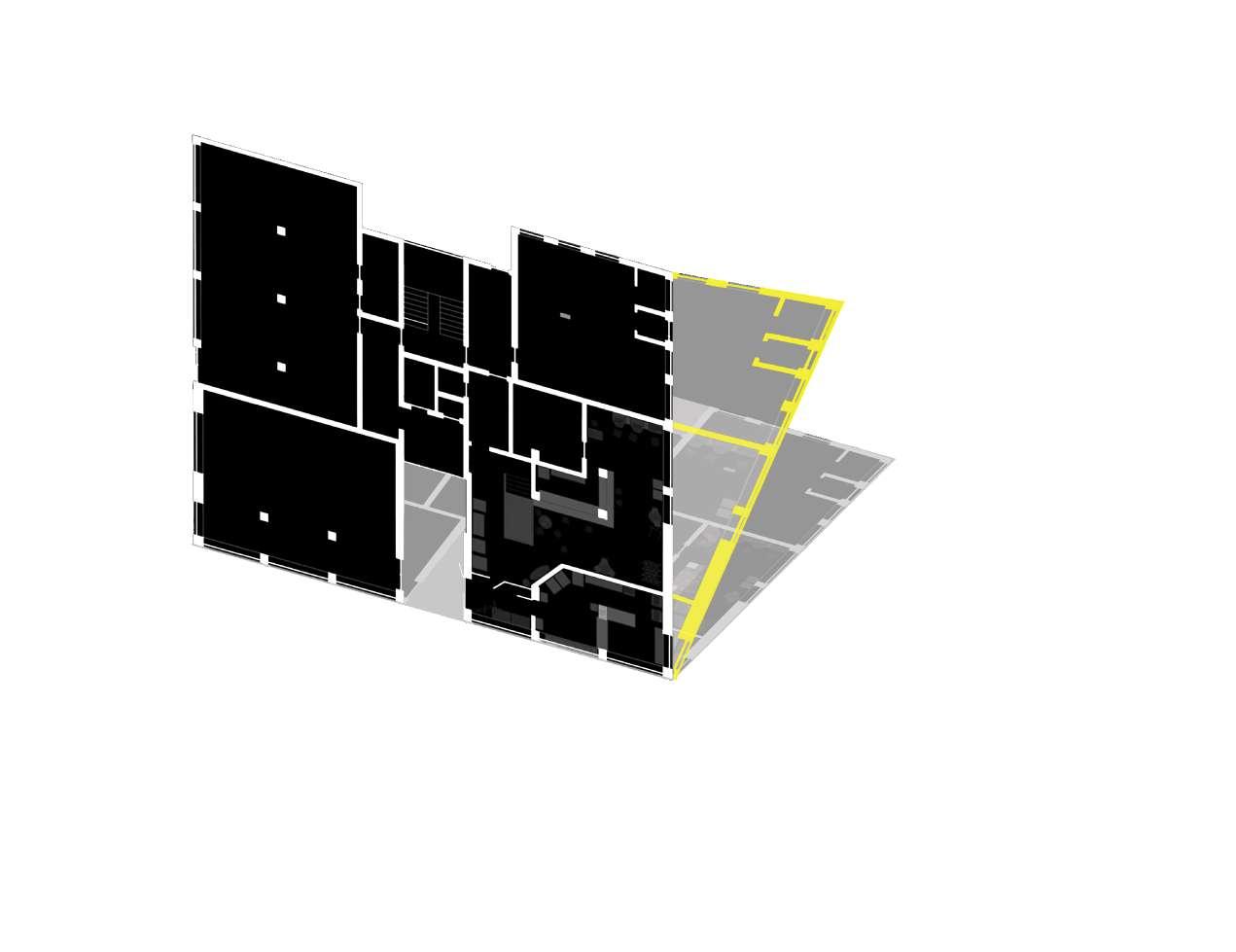
(WEIZMAN, 2017)

Forensic architecture collaborates with communities affected by social and political violence, alongside other NGOs, human rights groups, activists and media organisations. The data produced from their investigations have helped in raising awareness on colonialism, climate change, racism, and a number of legal crime cases at state and national levels.

Eyal Weizman, a british Israeli architect, is the director and founder of Forensic architecture. When Eyal graduated from architecture school in London, he moved back to Israel to continue his architecture career. He was invited by the Israel Association of United Architects to produce an exhibition that would represent the best of Israeli Architecture. Thorough analysis of the West Bank revealed that most of the architecture was used to suppress human rights and displace Palestinians from their homes and land. And this exactly what Eyal wanted to exhibit - the truth. The censoring of the exhibition was the starting point of his recognition, all around the world.
Forensic Architecture are not only architects, but also have a team of scholars, filmmakers, designers, lawyers, scientists, archaeologists, and psychologists, And as a collective they take on the roles of an architect by combining their spatial and

engineering skills, their ability to gather data, their detective skills, and storytelling skills, to produce their investigations.
Forensic Architecture’s work in the world of forensics has raised controversy on the need for an architect to determine evidence. Forensic Architecture’s investigations have been at timeschallenged, suspended and objected. With some attorneys claiming architects didn’t have the right expertise to understand conflict - or - their work had no precedental reference to be accepted as evidence in court.
However, architects are one of the most skilled experts in understanding issues or conflict within people - because they occur within the built form that they design for. Architects have the tools and resources that help unpack these state and global issues all around the world.
Architects enforce an imperative to shift attention from the figure (the individual or action) to the ground (the urban fabric or landscape). The architect is a median between the field (where violence occurs) and the forensic (labarotory analysis), because they understand both the built environment and it’s occupiers to unpack the hidden story.
The uncovered yellow tape demonstrate the countries in which Forensic Architecture has investigated cases in. The analysis illustrated a great amount of issues occuring in Europe, Asia and Africa, which inevitably occur due to population density, economic and cultural factors.

Most of their projects being in the middle east draws links to the collonial arrangements of history that - to this day - still occur. Whilst the events in the United States are focused on the racial inequalities experienced by the black people.
These investigations have seen relations between same or related violences occuring in different areas of the world. For example, pushbacks
were identified on the Evros/Meric River - in a number of cases, as well as in Melilla/Spain. By identifying patterns, awareness can be raised on preventing such events and resources could be shared amongst communities.
Different algorithms can establish correlations, clusters, and associations between incidents that otherwise woud have remained invisible. The analysis can also help in idetnifying modes and frequencies of attack, target groups and type of destruction/ violence.
This information then becomes useful in placing measures around the risk factors of potential or predicted violences.
There are still much more violence and events that need to be unpacked occuring in other countries covered by the yellow tape. Forensic Architecture may not have the resources to work in those countries - or - a political power is wanting to keep events or violences hidden.
There is a need for more grants or organisations to commission investigations around the issues happening locally and globally. Transcending this, there needs to be a shift from numbing percpetions of pain felt by others, and focus on sensing, detecting, processing and presenting the facts of the pain.

Does more violence mean more projects?
The traditional perception of architecture is inverted through Forensic Architecture’s work. They’re concern isn’t how the users will experience the building - rather how does the building experience the users, how it has been interacted with and what forces have been applied to it?
Therefore, this calls for a need for destruction, violence and crime for Forensic Architecture to continue working on projects.
Ultimately, violence (in all forms), human rights violations, racism and terror are inevitable. From the old fashion wars between armies, to the privacy breach in artificial intelligence of the current era - violence has occured in the past, is currently occuring & may occur in the future. Violence also comes in different scales - from fast terror bomibings, to slow cultural dispositioning.
Therefore, Forensic Architecture draw in an epistemological shift. They bring to awareness these violences that are silenced. Eyal states in one of his interviews to Informativos (2017) “In my understanding, truth is something that is a common resource. The truth is like air and water, something that we all need in order to understand our position on earth”.
This also raises the question around funding of their projects. Forensic Architecture are funded by academic, human rights, technology, and arts grants. Further funding is received from commissioned investigations and the exhibitions they hold. They are also employed to investigate crime events in state levels - by private parties or larger organisations.
Their skils and tools are used to uncover the truths about existing or previously occured events all around the world. With no set methodology, they work around the problem posed to them, and identify ways to unpack the story.
Consequently, implying that Forensic Architecture does not need more violence to have more projects.
In fact, they seek to present the truth for the victims of violence and terror - that have already occured. They respond to past and current violences all around the world and present ways to detect potential violences based on the current evidence. The income generated from their work are used to support the ongoing research and tools that uncover the truth.

Does this solve the core of violence?
Unfortunately, no. The way violence is inevitable and comes in various scales, speeds and times - it can not be prevented nor resolved. However, Forensic Architecture’s mission isn’t to resolve these issues but rather provide layers of information that increase awareness within all communities - dealing with the law, politics, society and urban planning. These informations allow cases in state level to be evidenced, human rights to be recognised and the wider community to get an understanding of the issues occuring.
The tools they have developed as a result of these investigations have been widely adopted by other agencies in their own investigation works. They have formed the basis on Predictive Forensics - identifying patterns of evidence in the current to predict the destructions of the future. Their PATTRN project is an open source software that allows users allows activists to upload information and then map relations between discrete events, identifying patterns and trends in time and space. Their aim was to support the idea of collating data and first hand reporting of events by people who are potential subjects to violence. This support and networking software has been adopted by several organisations are continuing to be used.
What is aesthetical about violence?

Forensic Architecture do not seek an aesthetical appreciation for their investigations. They are more focused around a social constellation that draws networks and representation on issues around the world. Violence and victims are part of the story they tell, but are recognised by Forensic Architecture for their own rights.
They seek consent of authors, humanitarian actors and stakeholders, before sharing information and photography, and censor data that will potentially breach privacy. This is, for example, evident in their missionary statement available online for their investigation into police brutality in the BLM movement.
Forensic Architecture have always been clear with their investigations and their methodologies used. Each investigation showcased on their website outline the tools used, the people involved, and the reason for their investigation. Understanding that each situation or event is unique, and requires its own method of investigation is critical in unpacking the story. There are no set methodologies that they use - it is their skills, time and commitment that allow them to develop the tools required for investigations.

Site Plan, Orthographics, 3D Model, Audio Analysis and Photographs - are simply not just the deliverables for an architecture student, these are some of the tools used by Forensic Architecture to bring justice to high-level cases around the world. Tools which are used by students and architects to produce A1 documents which are forgotten about after the final presentation (albeit they may find their way into a portfolio or exhibition if deemed worthy), are the same tools which are used to produce testimonies, data complexies, simulations and evidence for globally concerning cases.
A student or an architect will design something which does not exist, or something which has not yet happened. Forensic Architecture designs moments which have already occurred, moments which have been shared worldwide. Without the same access to resources as federal forensic agencies and the police, FA uses tools and resources accessible to everyone to produce evidence, hoping to bring justice to cases they work on. Yet another difference between the traditional architecture and them, is that they do not make projects with these tools, they produce evidence for cases. Many of these cases are highly-sensitive and recognised around the world. Yet, they navigate through these cases with the same tools used in architectural studio projects. An architect's client is someone looking for a tangible outcome. Comparatively, FA’s ‘clients’ are people who have been oppressed and oftentimes are deceased - as their families count on FA to bring justice to this oppression and hopefully allow peace within their lives.
Rhinoceros 3D - everyone’s favourite CAD software is often seen in the works of Forensic Architecture. Often shown in videos and photographs of FA’s process, as they create models, plans and various other documents for the cases they work on. They use these tools to re-create real world scenarios of violence, gathering data otherwise unseen or unheard. If possible, they bring survivors of these acts of violence back to the scene (digitally) to gather testimonies and statements, without sacrificing the health, safety or identity of the survivors. These reenactments of violence are their outcome - through the various methodologies they use. Since their outcome is not architectural and their clients are oppressed, marginalised and (many) are dead - who exactly funds their works?
Unlike the traditional architect, these other architects are not paid through private clients or the government. They are funded through academic, human rights, technology, and arts grants. Additionally, they are commissioned for investigations and exhibitions which helps them monetarily. It could be said that grants are the most important tool for them - more so than the software or technologies they use. Without the grants - FA would be severely underfunded, if existent at all. Patently, they use these tools to bring justice to cases of violence, however, what are the precise perimeters of their works?


"...we never do the same thing twice. We develop a technique to deal with a particular situation, and then we move on. If we make tools , we make them open source ... we don't have a methodology. We have our skills, time, and commitment."
- Eyal Weizman
TOOLS
Site Visits
Surveys
Satellite Images
Fluid Dynamics
Shadow Analysis
Audio Analysis
3D Modelling
Orthographics
Photography
Video Making
Site Study
Contours
Studying History
Site Plan
Wind Study
Shadow/Daylight Study
Acoustic Comfort Study
Renders Models
Plans, Sections & Elevations
Photographs of Site or Model Collages
Film

Fieldwork
Cartographic Regression
Remote Sensing
Particle Simulations
Time and Movement Analysis
Synchronisation
Echo Profiling
Situated Testimony
Reenactment
Photogrammetry
Image Data Complex
The tools Forensic Architecture use are much too similar to that of an architect or a student. This similarity extends to the point that audiences find it aesthetically pleasing to ponder upon. A university end of year show, an architect's documents, and the works of Forensic Architecture are all exhibited in some manner. Albeit, what do these entail (for Forensic Architecture) and what exactly is a Cartographic Regression or a Situated Testimony?


The process of using historic surveys, maps and satellite images overlaid on a contemporary map. This is used to track environmental changes in a location and overlay historic information. Example: Death Alley, Louisiana Below

Establishing the exact relationship between two or more pieces of audio-visual data. Knowing when one piece of footage began, relative to the other. Once multiple pieces are synchronised, they become evidence. Example: The Murder of Pavlos Fyssas Above

They use Fluid Dynamics, to trace the movement of particles in space. They test particle simulations such as gunpowder exploded in the air, tear gas used by forces or the sea current and seawaves. Example: The Murder of Halit Yozgat
Below
Using 3D models of environments and scenes where traumatic events occurred, to aid in the process of gathering testimonies and information from those who witnessed the events. Example: Drone Strike in Mir Ali Above
A means of testing real-word phenomena. Using digital simulations to test movement - known as ground truthing. Reenactment is a traditional forensics tool used uniquely by Forensic Architecture. Example: Racist Terror Attack in Henau Below
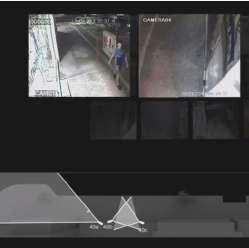

A large number of still photographs of an object or environment can be used to create a navigable 3D model. These models can be used to configure distance, terrains, and points (through triangulation). Example: The Destruction of Yazidi Cultural Heritage Below

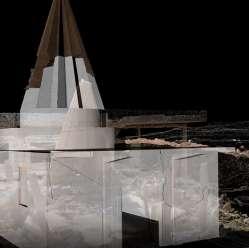



Patently, Forensic Architecture uses these tools to investigate. These tools are extended towards the clients - being those who have been oppressed. These tools are also producing outcomes which are dealt with aesthetics are presented in such a manner . In this instance, is violence the art? Albeit the exhibitions do gather attention, many of the investigations are intially done to aid with the cases, and the art becomes a secondary output of these investigations.
The output of the traditional architect and the other architect share the same origin in that they use the same tools to create their works, though the outcomes are obviously different. Forensic Architecture’s outcomes do not simply encompass of their website and the exhibitions. They’re work is represented through a plethora of mediums , which help to share the knowledge of their work. So what other interfaces are part of their representation of violence, and are all of these associated with being an artwork - as their exhibitions often are?




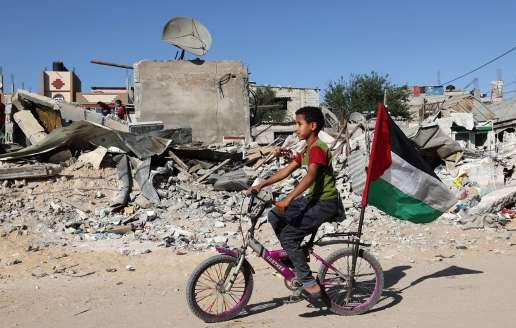




Raw evidence, real materials and the bruises left on buildings. But somehow it is still hidden. Behind governing figures, behind distractions, behind misleading news and behind what they want you to see.
If not hidden could the evidence not advocate for itself? It could.
Forensic Architecture combines physical evidence, media and human memory together and discloses what may have otherwise remained concealed. Challenging states, police, corporations, military, war criminals and those undertaking hate crimes by dissecting the narratives they present in order to uncover the truth - or as close to it as possible - to give back to the people fighting for their rights. The physical entity of the built environment is made real and present in the lives of the people it is influencing, by acting as a material recording device which later has the ability to advocate
for their rights and present the realities in which it fosters or rejects.
When disrupted by crime, realities are manipulated and the relationship between legal policies and physical objects is blurred by destruction. The justice system on many occasions has failed to recognise injustices due to their lack of spatial understanding. This has destroyed lives of civilians but protected people of power.

The results, minimal or large, derived from the process of uncovering injustices presents architecture as a material recording device that can be legally liable in cases against the violation of human rights. The tools and methods are used to gather data for Parliamentary and judicial processes, having the ability to stand up in court and influence policies. The collection of evidence becomes a physical aggregation of the human experience, but in this case, the not so pleasant aspect.

Events Exhibitions
Link

The exhibitions are held both in the countries in which incidents happened and ones outside. The same exhibitions are held multiple times. Many are held in counties in which these violences did not occur, in order to raise awareness of such actions, or maybe to show the implications of first world powerful countries

Exhibitions, Museums, Art galleries, Books, Publications, Workshops, conferences, seminars, online releases, Videos and their Website. Some of the many ways their information is presented.

The technology of today has redefined advocacy as we know it. It has brought about opportunities never before available. Within the click of a button images are shared, videos are reposted, realities become transparent, and the outreach is doubled within seconds. The otherside of the world is now informed of an unfiltered truth, one not controlled by media outlets and governing figures. But can the contents within 16:9 pixels share the whole story? Here it is not art. The internet becomes a gallery, one of many twisted realities and thus the importance of exhibitions is heightened, especially for Forensic Architecture. Through the use of architectural tools, they piece together and correlate as much of the truth as they have had the ability to uncover. Now the viewer is standing in a room, surrounded by the truth, one that can't be turned off by clicking the button on the right side of an iphone. Is it art?. But one that can be taken away with them if they do open their phone and go to the website. Here it is not art.
Art is a medium for advocacy, and although Forensic Architecture's use of exhibitions where images are on display on walls as if it were art, the objective is not to romanticise any of the findings. It is to analyse and present information.
Similarly, A 1:1 replica of a crime scene exhibited in a gallery. Is this art or is this reality? This is presenting a reality that is otherwise not accessible to the public in a first world, war free country.

WHAT HAPPENS AFTER IT IS TAKEN OFF THE WALL?

The messages are advocated through the presentation and collection of horrors, otherwise known as stories. They are the lives of some, but an image on the wall to others. What happens when they are taken off the wall? Are there horrors of any less importance?

Their findings are published online and made public in order to fill in the gaps of public knowledge and expose the inhuman actions being undertaken around the world. The traces left on buildings through time helps in bridging the gaps between witness evidence, material evidence and spatial evidence. The forensic architecture website is a collection of these horrors, easily accessible to the public. Their exhibitions are constantly repeated in different countries to increase the amount of exposure and their cases work to help advocate until the injustices are exposed or justice is achieved for the victims or their families.
Funded through grants and universities and trust, there is no paying client. The client is sometimes no longer present. Other times the client is the victim, their families or the impacted communities. But ultimately the client is the public. Forensic architecture uses their power as an act of service to the world, to reveal the truth behind harsh realities, governing bodies and powerful figures. Their audience is global and limitless, and thus has the ability to prompt change. We must correct what has passed in order to shift how we move forward.
To question whether this is art or not is thus not necessary. The goal is to push a message, through this medium or another. One that is raw and real.
JULIA BOUSTANI
MELEK JAMIL
MOHAMMAD NATHANI
